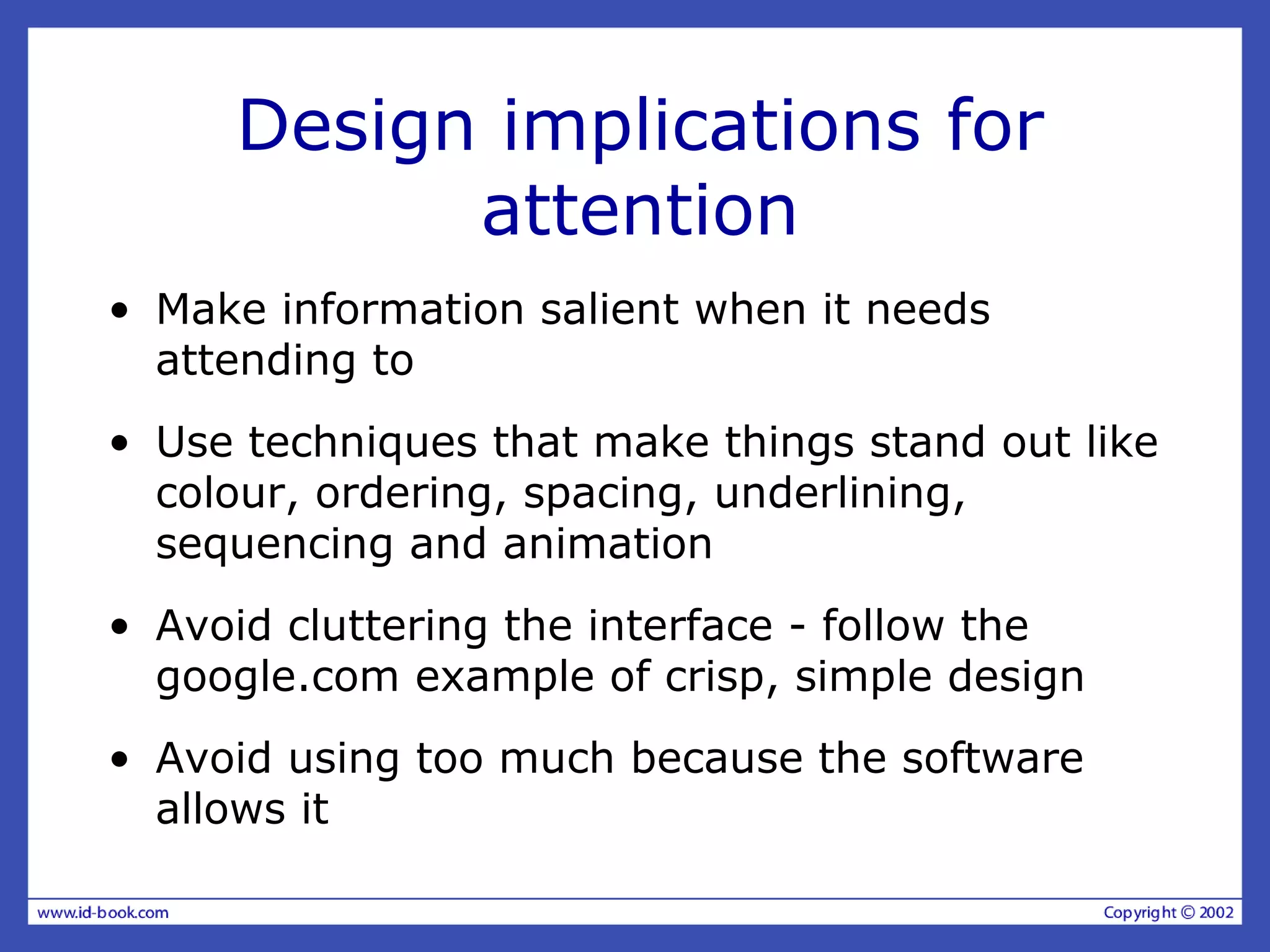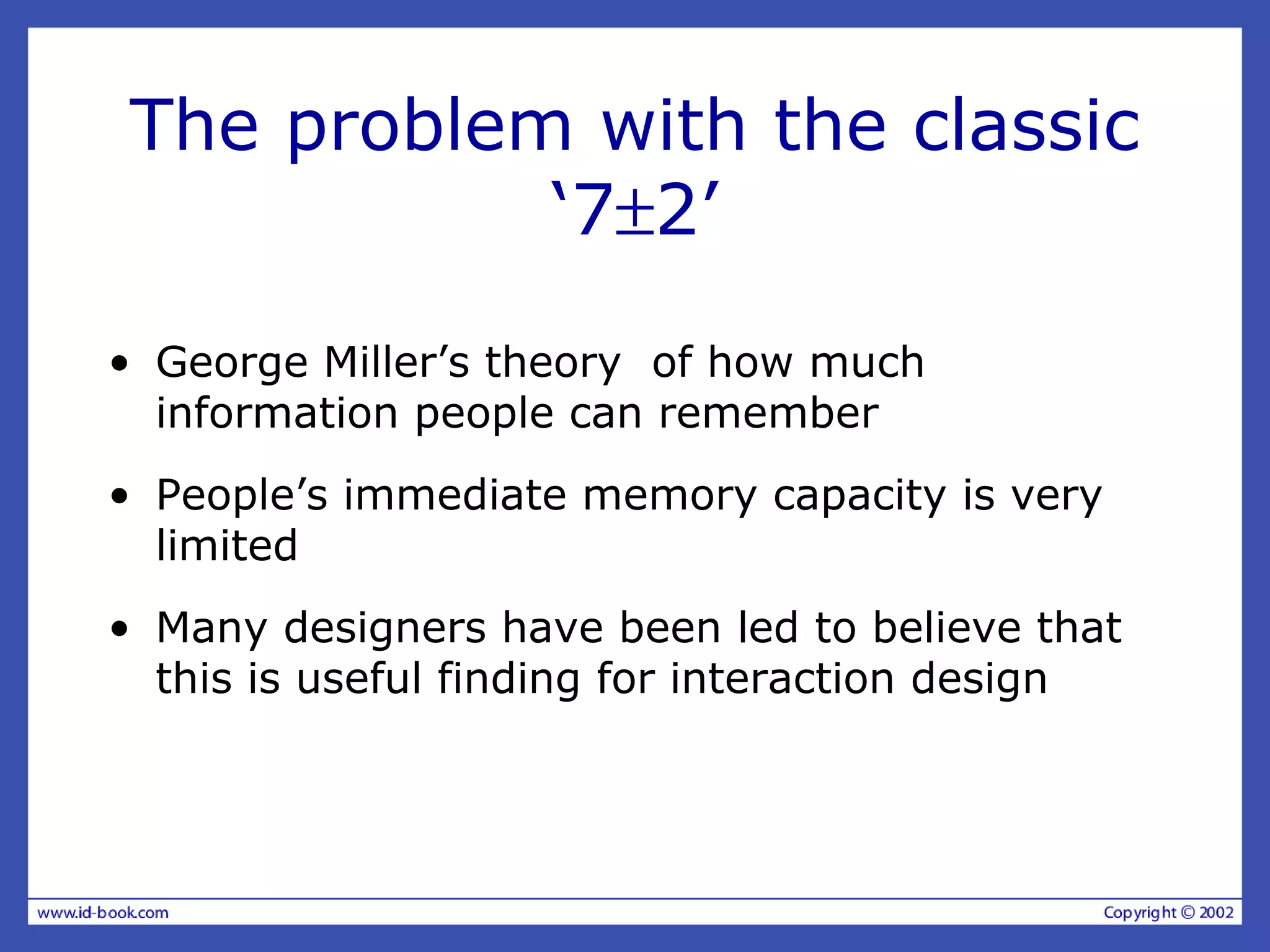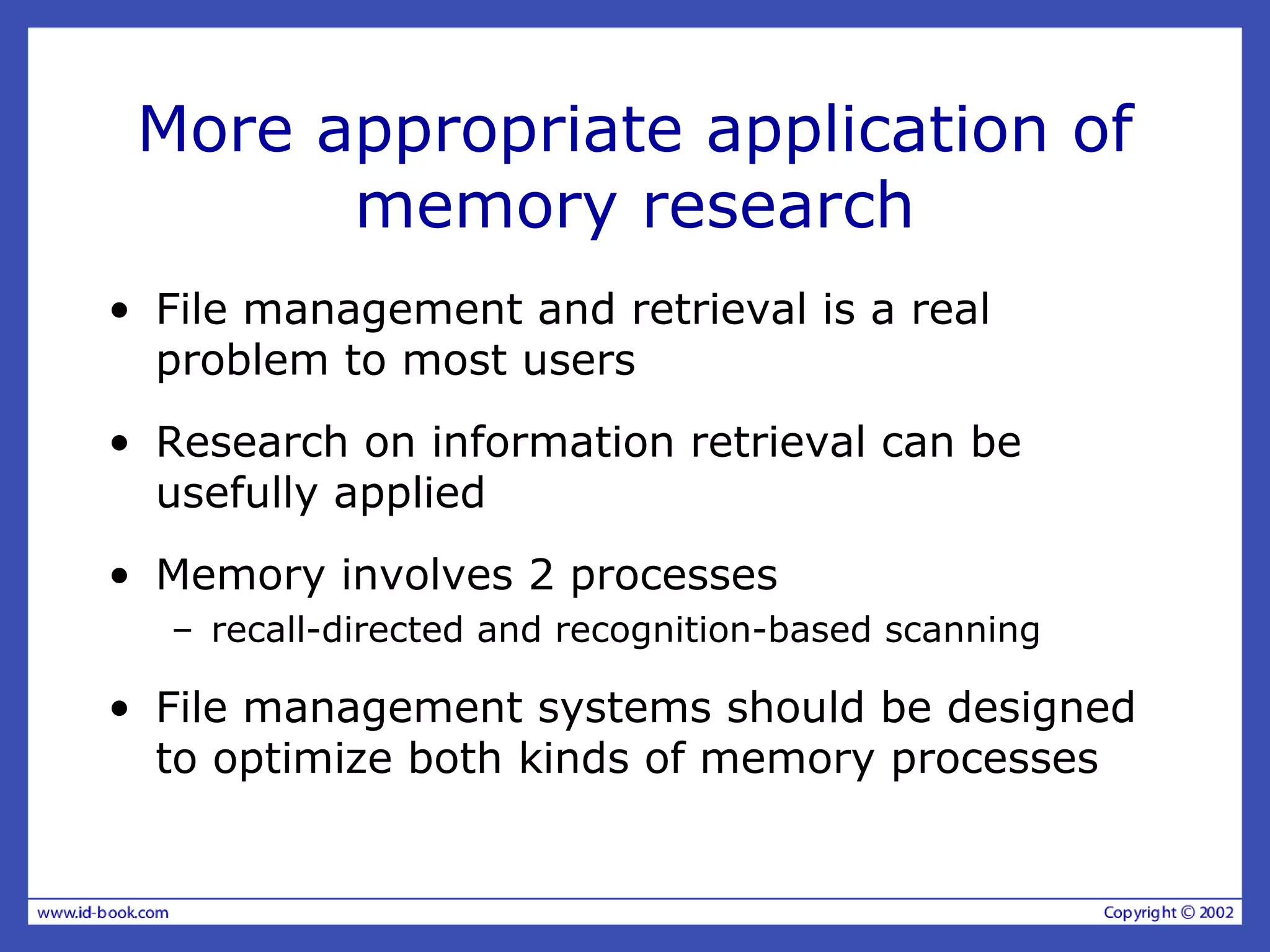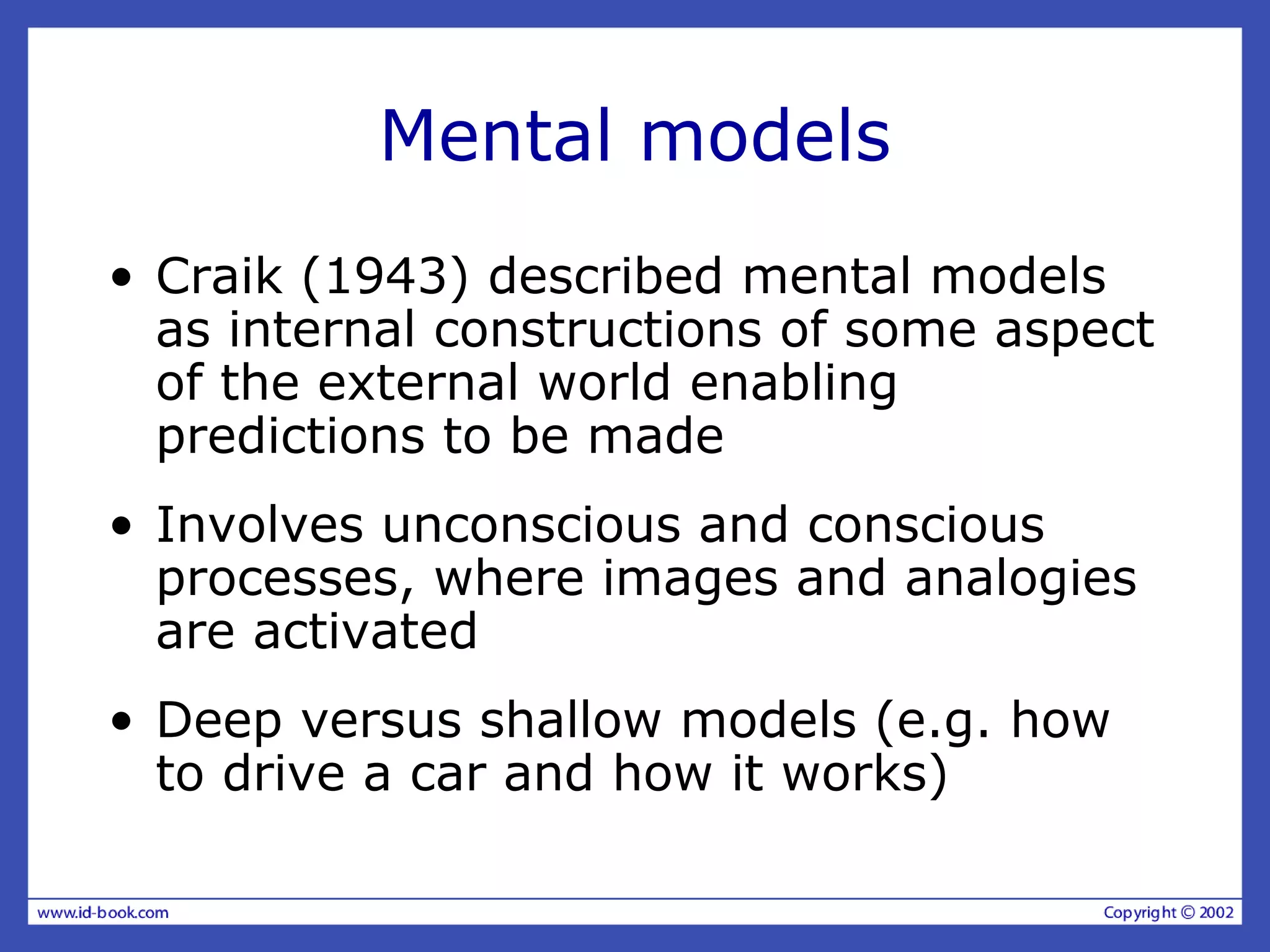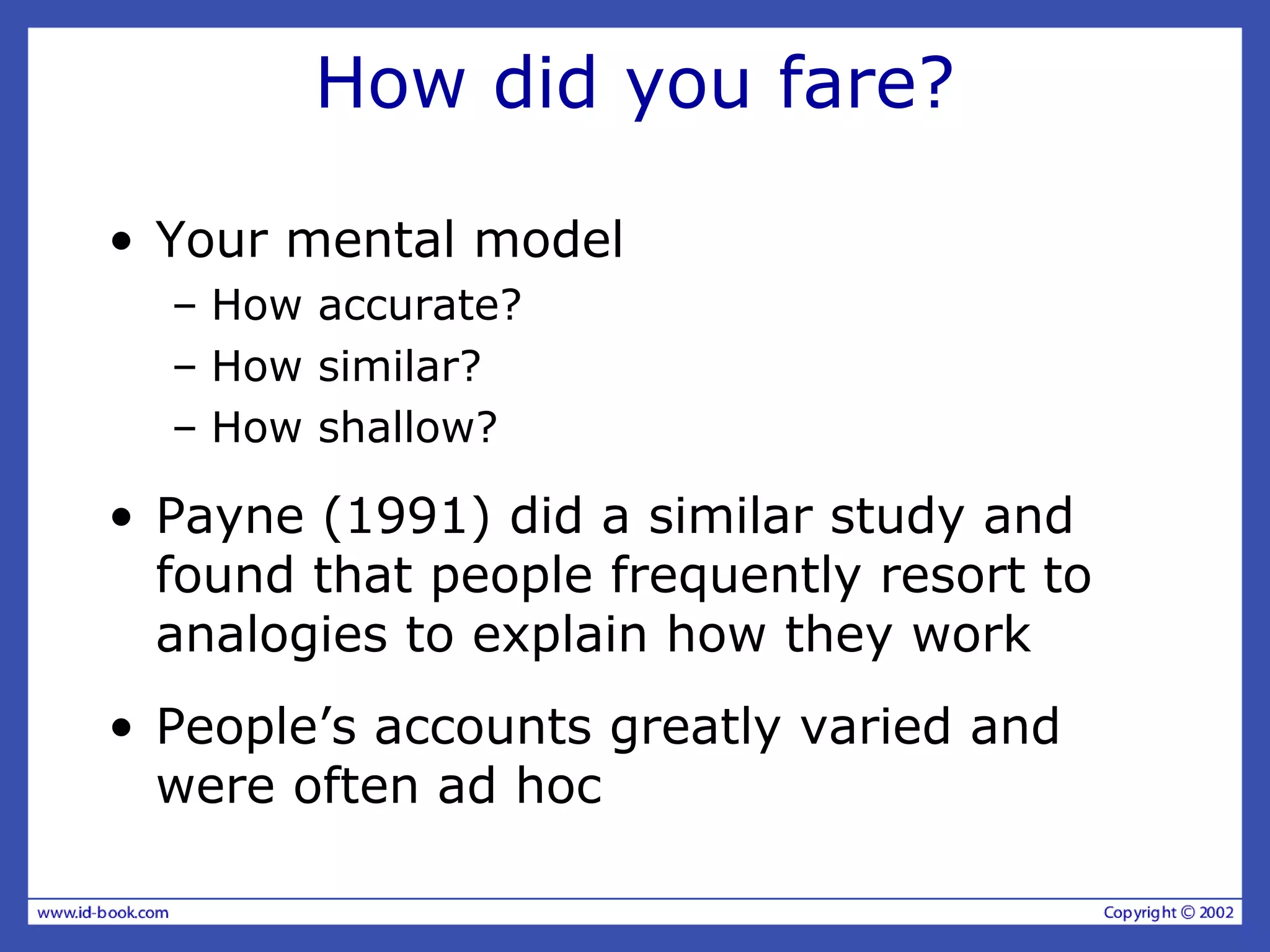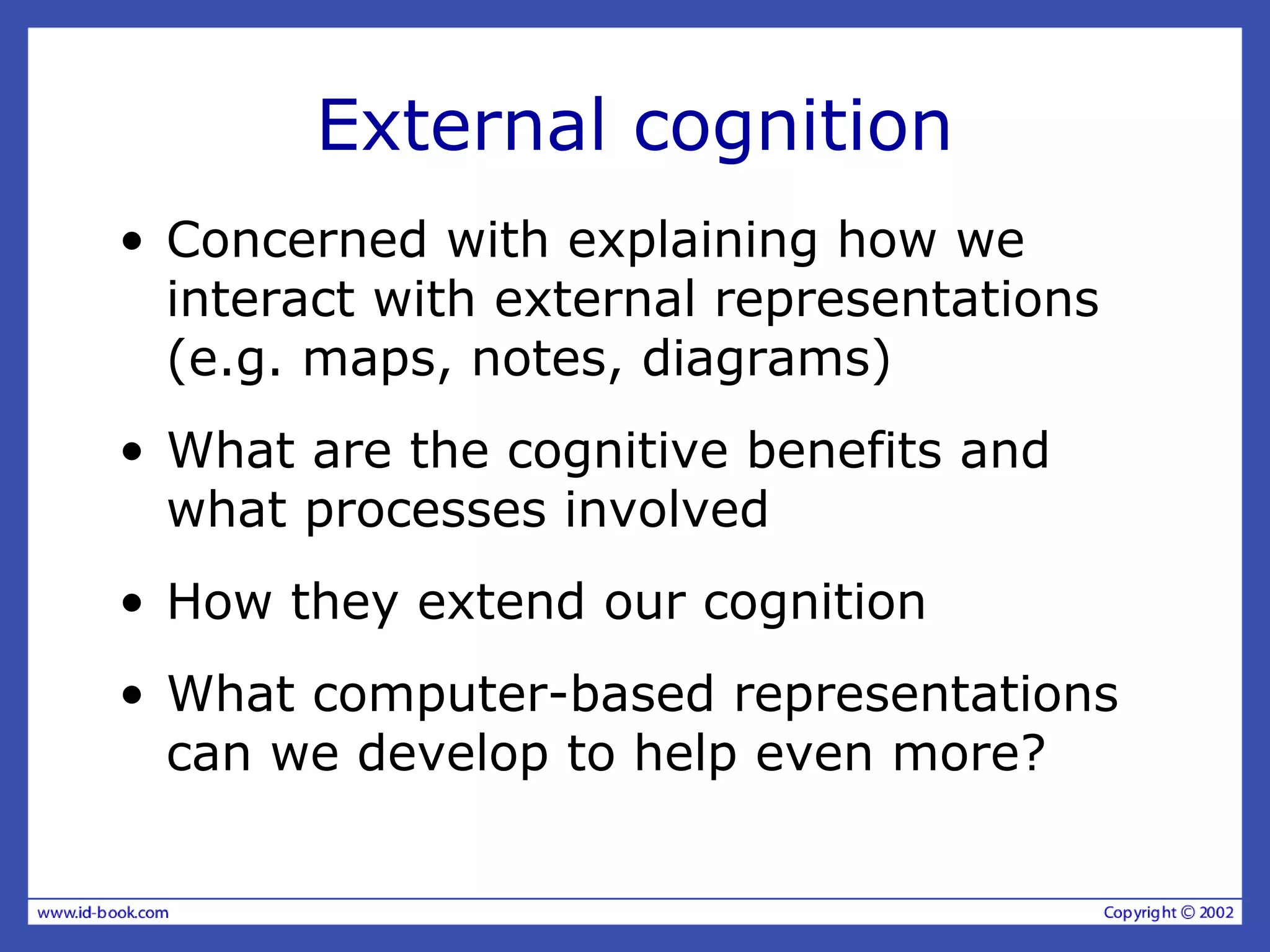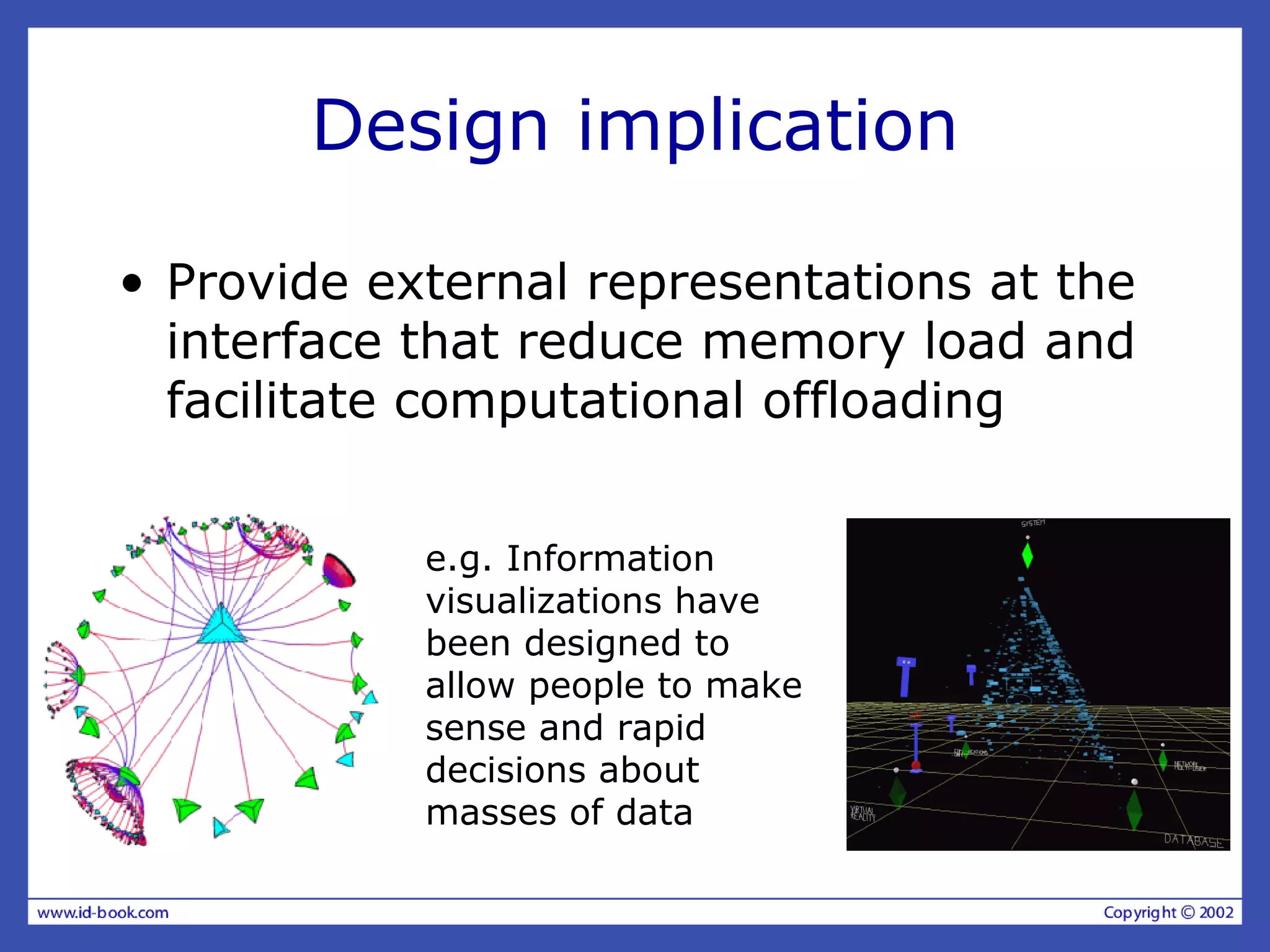This document discusses understanding users through a cognitive perspective. It covers key cognitive aspects like attention, perception, memory and how they impact user experience. Designing interfaces based on how users pay attention, perceive, remember and problem solve can help create more intuitive products. The concepts of mental models and external cognition help explain how people interact with technology and provide guidance for better design. The goal is to understand users' cognitive abilities and limitations to inform the design of interactive systems.






